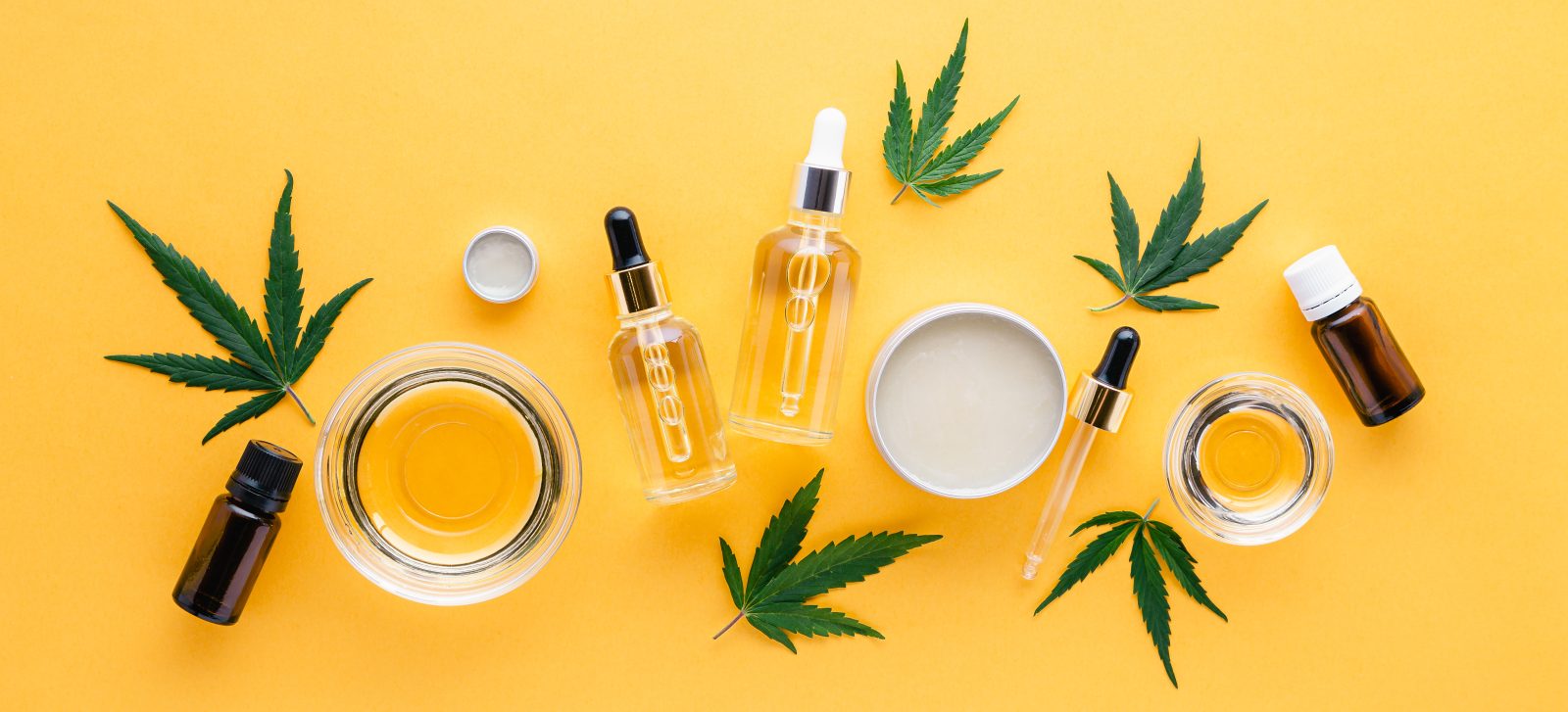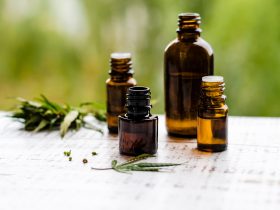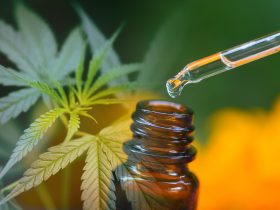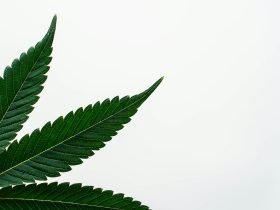CBD, found in cannabis and THC, doesn’t cause a high. It may help improve mood, reduce pain, and help manage certain health conditions. However, side effects and potential drug interactions may exist, so start with a small dose.
Chances are, you’ve heard about CBD, especially if you’re dealing with chronic issues like pain or anxiety.
Suppose you’re considering trying CBD but are still dg where to begin. In that case, we’ve complied a quick and helpful guide to address your queries and dispel common misunderstandings surrounding CBD and its applications.
What is CBD?
Cannabidiol (CBD) is one of the many active compounds in cannabis. Unlike its counterpart, tetrahydrocannabinol (THC), it doesn’t cause a “high.”
CBD products derived from cannabis might offer more effectiveness than hemp, yet CBD from industrial hemp still delivers numerous health benefits.
Even if you’re in a state where medical cannabis isn’t legalized, or specific strains aren’t accessible, you can still enjoy the advantages of CBD derived from industrial hemp products.
What exactly does CBD do to you?
The exact way CBD works isn’t fully understood, but it’s believed that it might activate or block CB1 and CB2 cannabinoid receptors. These receptors are part of the endocannabinoid system (ECS), which regulates sleep, mood, and appetite.
CBD might also interact with certain serotonin and opioid receptors, possibly triggering a process that lowers cholesterol and blood sugar levels.
Additionally, it could influence PPAR gamma activity, which affects intracellular calcium release, playing a role in specific cellular functions. While there’s still limited CBD research, the existing findings are encouraging. Some studies suggest that CBD could relieve various mental and physical conditions.
For instance, research on rats indicated that CBD oil might help with arthritis-related pain. Another study involving human cells found CBD cream to be effective against inflammation.
CBD has also demonstrated its potential in treating childhood epilepsy and seizure disorders. Some evidence suggests it could have anticancer properties and alleviate the side effects of cancer treatment. More research is necessary to fully understand CBD’s benefits as a treatment for mental and physical health conditions.
Are there any concerns?
CBD can lead to certain side effects, including nausea, irritability, drowsiness, or heightened thoughts related to suicide.
Avoid combining CBD with alcohol or sedative medications. Be alert for any shifts in mood or thought patterns.
CBD comes in various forms, allowing users to customize their usage. Here are the most common CBD forms:
Oils and tinctures
These liquids, often oils, contain CBD and are placed under the tongue using a dropper. The tiny capillaries in the mouth quickly absorb the compounds. Oils and tinctures are suitable for those who have difficulty swallowing pills or capsules.
Topicals for skin
CBD-infused topicals are applied to the skin to alleviate muscle and joint pain. They can also address skin conditions like eczema and psoriasis. There are even CBD patches available that work similarly to nicotine patches.
Capsules and pills
CBD capsules and pills are used to treat seizure disorders and digestive issues. The FDA recently approved Epidiolex, a high-potency CBD drug for treating seizure disorders.
However, capsules do have one drawback. They take some time to take effect after ingestion.
Edibles
Gummies are a popular choice for consuming CBD. They are affordable, portable, discreet and come in enjoyable flavors. With gummies, you know your exact dose, eliminating guesswork.
Vaping
Inhaling vaporized CBD oil, similar to using e-cigarettes for CBD, offers the fastest way to feel its effects. The compounds are directly absorbed from the lungs into the bloodstream. It’s important to note that there might be a risk to lung tissue, so be cautious.
How much should I take?
According to a 2017 study, the maximum oral dose people can tolerate is 1,500 milligrams (mg) daily.
Moreover, due to CBD’s relatively new and unregulated status in the market, there’s a potential risk that a CBD product might contain more THC than stated. There could also be variations in actual CBD content across different products.
Pharmacist Lindsay Slowiczek, PharmD, advises, “Start with a low dose until you understand how your body responds to CBD. Clinical studies have explored a wide range of CBD dosages, but more evidence is necessary to establish safe and effective dosage recommendations for specific purposes.”
She continues, “Currently, follow the recommended dose on the product unless your doctor approves higher doses. Individuals with certain health conditions, like liver disease, might require lower doses to prevent severe side effects.”
Topical CBD
Topical CBD products, like lotions, only affect the skin locally. Transdermal options, such as CBD patches, go deeper by entering the bloodstream and reaching muscles. Remember that how much CBD enters your system depends on whether it’s topical or transdermal.
To be cautious, try a small skin area when using a topical. Watch for irritation or changes. If using a patch, follow a similar approach. Remove it if any signs of allergy occur.
Frequently Asked Questions
Is CBD different from marijuana?
CBD and THC are found in the cannabis (marijuana) plant but impact the body differently. Unlike THC, CBD doesn’t have psychoactive effects.
Is CBD considered a drug?
In 2018, the FDA removed CBD from its list of controlled substances. Although not considered a standalone drug, CBD is present in Epidiolex, approved by the FDA for treating seizure disorders.
Is CBD harmful?
CBD can be risky depending on how it’s used. It might interact with certain medications, negatively affect the liver, and potentially impact male fertility based on some animal studies. Despite its popularity and benefits, consult a qualified healthcare professional
What’s the distinction between hemp and cannabis CBD?
Hemp and cannabis are two variations of the Cannabis sativa plant. Hemp has higher CBD levels and minimal THC, making it a common source for CBD production.
How does CBD differ from CBN?
CBN is another cannabinoid, though it’s not as prevalent in the cannabis plant. It’s created from CBD exposure to heat and light. CBN doesn’t induce a high and has a similar brain effect to CBDs. Further research is necessary to understand it better.
In Conclusion,
CBD is a substance found in the cannabis plant alongside THC. Unlike THC, CBD doesn’t lead to a high.
Studies indicate CBD’s potential to enhance mood and alleviate pain. It could aid children with seizure disorders and assist cancer patients in managing treatment-related symptoms.
However, CBD has potential side effects and associated risks that need more understanding. Ensure your medications don’t interact with CBD. Begin with a small dose to gauge your body’s response.
















Find Us on Socials